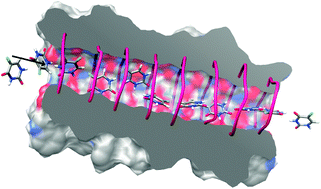Theoretical studies on the transport mechanism of 5-fluorouracil through cyclic peptide based nanotubes†
Abstract

* Corresponding authors
a
Chemical Laboratory, CSIR-Central Leather Research Institute, Adyar, Chennai 600 020, India
E-mail:
subuchem@hotmail.com
b Department of Inorganic and Physical Chemistry, Ghent University, Krijgslaan 281(S3), Gent 9000, Belgium

 Please wait while we load your content...
Something went wrong. Try again?
Please wait while we load your content...
Something went wrong. Try again?
R. Vijayaraj, S. Van Damme, P. Bultinck and V. Subramanian, Phys. Chem. Chem. Phys., 2013, 15, 1260 DOI: 10.1039/C2CP42038D
To request permission to reproduce material from this article, please go to the Copyright Clearance Center request page.
If you are an author contributing to an RSC publication, you do not need to request permission provided correct acknowledgement is given.
If you are the author of this article, you do not need to request permission to reproduce figures and diagrams provided correct acknowledgement is given. If you want to reproduce the whole article in a third-party publication (excluding your thesis/dissertation for which permission is not required) please go to the Copyright Clearance Center request page.
Read more about how to correctly acknowledge RSC content.
 Fetching data from CrossRef.
Fetching data from CrossRef.
This may take some time to load.
Loading related content
